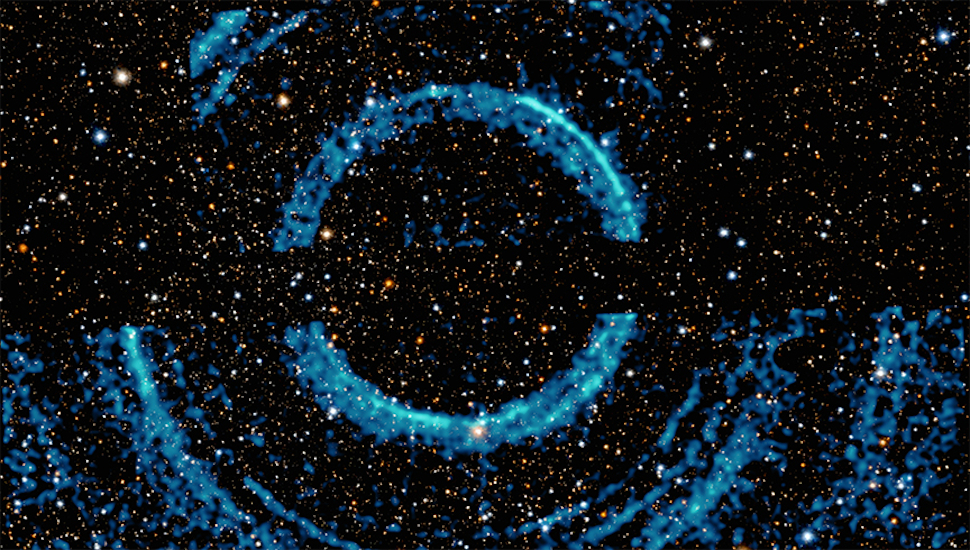
 Credit: X-ray: NASA/CXC/U.Wisc-Madison/S. Heinz et al.; Optical/IR: Pan-STARRS
Credit: X-ray: NASA/CXC/U.Wisc-Madison/S. Heinz et al.; Optical/IR: Pan-STARRS
Echoes Ringing in the Dark
The Milky Way is an untidy place. Looking out in any direction, your view of the Galaxy is hampered by dark clouds of dust which block our view and change the apparent colors of stars. A famous example is the Horsehead Nebula in the constellation of Orion, a dark dust cloud seen in projection against a bright background of glowing gas. Dust is a solid that condenses from gas that's been enriched in iron, silicon, oxygen, carbon and other complex elements. Unlike the dust you might find in your house, however, dust in the Galaxy is made up of very tiny particles about the size of the particles found in smoke. Dust actually is a vital component of the galaxy, playing an important role in the way nature forms stars and planets. Because dust primarily makes itself known by blocking background light, it's difficult to determine the distance to dust clouds along any given line of sight, or the actual distribution of dust in our Galaxy. But, In addition to obscuring background light, dust also scatters it, which can provide a simple geometrical clue to where the dust may be hiding. In 2015 there was a strong outburst from a black hole in a binary system called V404 Cygni. The black hole pulls matter from a nearby companion star, and accretes it. This accretion process generates all types of radiation, but is unstable, which can lead to sudden flashes of radiation throughout the electromagnetic spectrum. X-rays from the outburst, as they traveled through space to us, passed through clouds of dust which scattered a fraction of the X-rays towards us. This scattering process is similar to the echo of sound bouncing off a canyon wall, but in this case we see a light echo in X-rays as the X-rays from the outburst of V404 Cygni bounce off dust into our view. The time-delayed echoes appear as rings around V404 Cygni, and the apparent diameter of the rings depends on the distance of the dust cloud to us: nearby dust clouds produce rings that appear larger than more distant dust clouds closer to V404 Cygni. The X-ray image above, from the Chandra X-ray Observatory, shows the rings of echoing X-rays from the outburst of V404 Cygni (superimposed on a beautiful optical image from the Panoramic Survey Telescope and Rapid Response System project). V404 Cygni is at the exact center of the rings. The ringing echoes of transient outbursts helps illuminate the structure of dust in the Galaxy.
Published: August 9, 2021
<
HEA Dictionary ● Archive
● Search HEAPOW
● Other Languages
● HEAPOW on Facebook
● Download all Images
● Education ● HEAD
>

Each week the HEASARC
brings you new, exciting and beautiful images from X-ray and Gamma ray
astronomy. Check back each week and be sure to check out the HEAPOW archive!
Page Author: Dr. Michael F. Corcoran
Last modified Monday, 26-Feb-2024 17:47:30 EST


